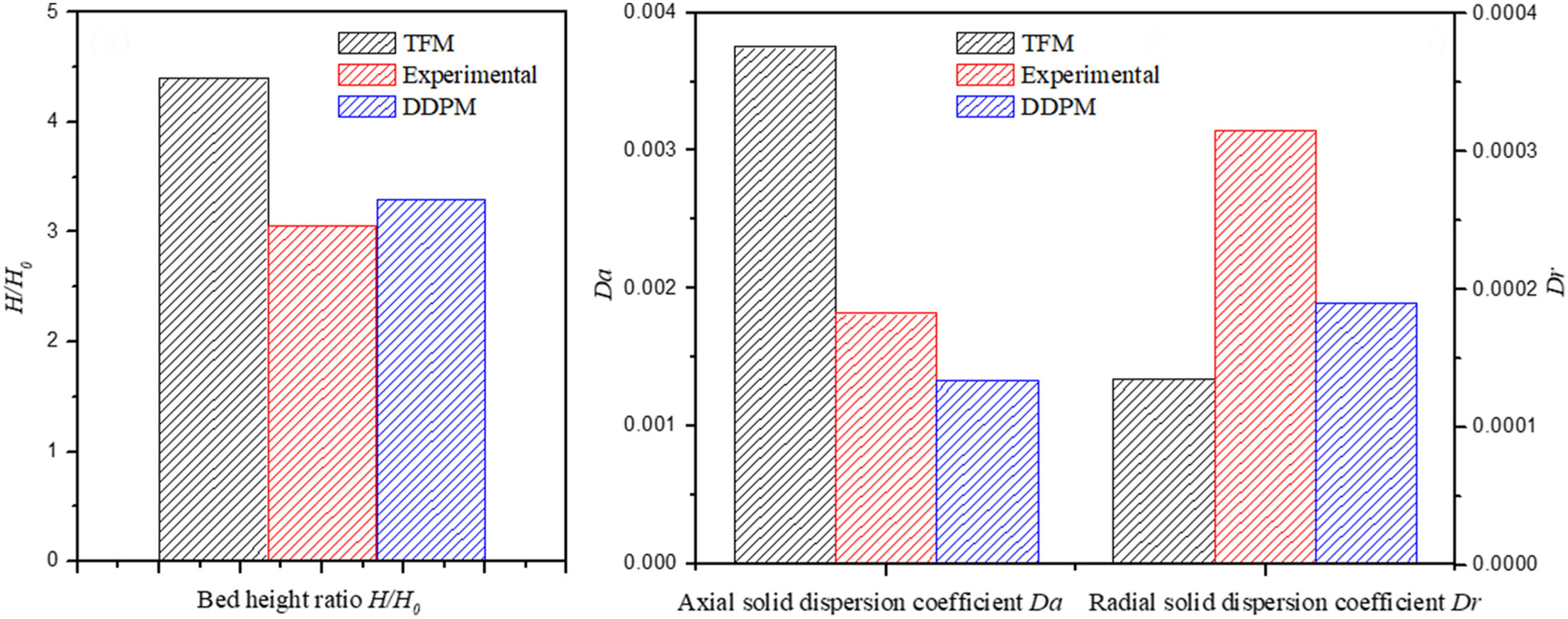• TFM and DDPM are investigated and compared for bubbling fluidization of nanoparticle agglomerates.
• Sensitivity analysis of submodels and model parameters is carried out.
• The submodel parameters mainly affect the flow behavior at the near-wall zone.
• Drag models significantly impact the overall hydrodynamics for both approaches.
In this study, the numerical performance of the two-fluid model (TFM) and the dense discrete phase model (DDPM) for simulations of bubbling fluidization of nanoparticle agglomerates is compared. The effects of grid size, specularity coefficient, restitution coefficient, reflection coefficient, and drag models are investigated and compared for the two approaches. The grid size analysis results indicate that the DDPM generates a better grid-independent solution than the TFM. The sensitivity analyses show that sub-model parameters mainly affect the local flow behavior at the near-wall zone, while the drag models show a major effect on the overall hydrodynamics behavior for both approaches. The TFM predict the annular-core flow in the bed, but over-predict the bed expansion height and the axial solid dispersion coefficient. The bed height ratio and solid dispersion coefficients predicted by the DDPM are more closely aligned with the experimental data, while the flow fields in the DDPM exhibit multiple internal circulations, and the solid concentration show irregular radial fluctuations.

